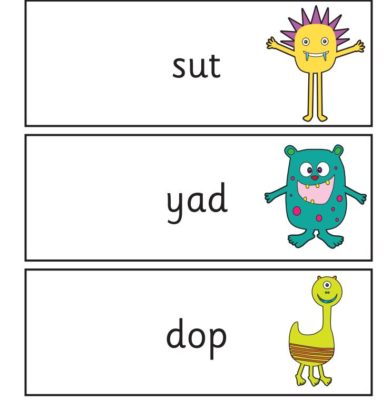I recently had a Zoom meeting with a Year 6 teacher who discussed how a number of his pupils were struggling with reading and he said he was using the Year 1 phonics check to assess them. This may seem odd, but is has never occurred to me that the Year 1 Phonics Check is in fact an assessment tool that can be used for all ages. Maybe because of the storm of opposition that engulfed the Phonics Check when it was first introduced, it is limited to Year 1 and Year 2 (for those children that failed to pass it in Year 1). Why is it such a useful tool?
If we go back to ‘The Simple View of Reading’, Gough and Tumner (1986) describe reading comprehension as the product of word recognition and language comprehension. For beginner readers we need to replace ‘word recognition’ with ‘decoding’ because the process by which readers acquire automatic word recognition is through being able to decode efficiently and rapidly.
To summarise: beginner readers need to be able to recognise (decode) the words on the page at speed and comprehend the meaning of those words within sentences.
When a child struggles with reading we need to assess what is causing them difficulty before we plan a programme to help them. We will need to find out:
- Can they comprehend the language? If the reader speaks English as an additional language, or has receptive language difficulties, they may need language development work.
- Can they decode the words on the page? If the reader struggles with decoding we need to find out where the difficulty lies.
What does the reader need to do in order to decode efficiently?
The beginner reader needs to:
- recognise the letters (graphemes) and recall the sounds they represent rapidly,
- blend (push) the sounds together into a word.
The Year 1 Phonics Check assesses both these areas. It presents the reader with some real and nonsense words (words the child won’t have encountered before), and this will demonstrate if the reader has sufficient knowledge of the Alphabetic Code and if they can blend sounds together. The assessor can observe where the child is struggling and design a remediation programme accordingly. The Year 1 Phonics Check is a snapshot of the abilities or difficulties of a child decoding words. It is so useful for teachers that they should embrace this to see how they can help their readers. As the Year 1 Phonics Check has a sound theoretical basis, this quick assessment tool can be used with older children too. Of course, a teacher in Year 6 may remove the images of alien monsters to make the check age-appropriate.
The Year 1 Phonics Check now being rolled out in some states in Australia and, hopefully, other English-speaking countries will adopt this useful tool too. If we want to help our readers, surely we need to find out what they are struggling with first!
#readingintervention #structuredliteracy #phonicscheck #Year1phonicscheck


